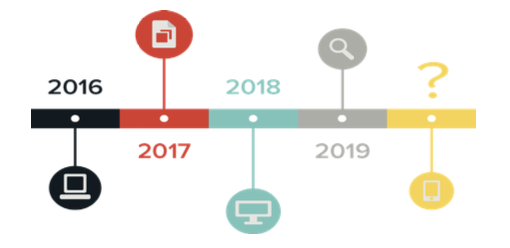Contents
- Marketing Attribution Mistake #1: Concentrating on Consumer Data
- Marketing Attribution Mistake #2: Rejecting Regulatory Realities
- Marketing Attribution Mistake #3: Speaking in Silos
- Marketing Attribution Mistake #4: Neglecting Non-Marketing Factors
- Marketing Attribution Mistake #5: Failing to Adjust for the COVID-19 Pandemic
The Top 5 Marketing Attribution Mistakes
07/01/2020
Marketing Attribution Mistake #1: Concentrating on Consumer Data

Marketing Attribution has become a hot topic of late. Technology industry changes, new regulations and the death of the cookie have all raised the stakes for marketing attribution and are forcing brands to not only change how they think about attribution, but also how they do it. In the work we do with countless brands across industries, OptiMine has a unique perspective on what works, but just as important, what doesn’t — and what common mistakes brands should avoid as they evolve their own marketing measurement away from traditional methods to fully modern approaches.
In this blog post, OptiMine will share the five most common attribution mistakes brands make, how to avoid them, and also how to think differently about marketing attribution to “future-proof” your marketing measurement. First, we’ll explore Attribution Mistake #1: “Concentrating on Consumer Data”.
In many marketing circles, “marketing attribution” became synonymous with tracking an individual consumer across ads and devices, and this did a real disservice to the marketing industry. Why? Because marketers were led to believe that the only way to measure marketing performance was to “know exactly” which ads were seen by a specific consumer. This approach is now running into a myriad set of issues:
(1) Technology: Apple’s ITP and other tech changes are killing this kind of tracking.
(2) Cookie Death: the entire ad tech industry has moved away from cookies (or will be shortly) creating a massive challenge to this tracking-based attribution method.
(3) So-called “Unified” Marketing Measurement Vendors attempted to merge marketing attribution with marketing mix modeling in order to solve the fact that tracking-based attribution could not measure traditional media nor offline conversions. This Frankenstein-like “unification” creates a host of new issues: mismatching or conflicting answers, measurement gaps, and major new costs and complexity of third party data.
With these issues as a background, some brands still mistakenly believe that the Marketing Attribution 1.0 approach of trying to track every consumer and device is the way to measure marketing performance (Hint: there are better ways: ”Measuring the Incremental Effects of Marketing”). In the process, the brands create major problems and new risks for themselves and end up with measurement that isn’t very accurate or useful (and never was to begin with).
Marketing Attribution Mistake #2: Rejecting Regulatory Realities

The next common mistake deals with new consumer privacy regulations that impact the marketing technology ecosystem, including marketing measurement. Our aptly named Attribution Mistake #2 is “Rejecting Regulatory Realities.”
The regulatory realities we are referring to are the new consumer data privacy regulations, such as the California Consumer Privacy Act (CCPA). The enforcement of the CCPA officially began on July 1, 2020, and if your brand’s plan is to hope you’re not at risk, news flash—that is not a plan. The risks to your business are substantial, growing, and if you’re partnering with a marketing measurement vendor who uses consumer identity data, you’re at an even greater risk.
One quick note about the risks of using PII for your marketing attribution: it doesn’t have to be this way. OptiMine uses no PII, tracking pixels, cookies, or consumer identity data, EVER. Choose a marketing attribution solution that is 100% future proof and risk-free (OptiMine), and avoid this common attribution mistake.
Marketing Attribution Mistake #3: Speaking in Silos

Now for Attribution Mistake #3: “Speaking in Silos.”
Unfortunately, many brands still manage marketing with different teams by marketing channel. The email team might be different than the paid search team, and for certain would be different than the TV team. These teams don’t always coordinate very well and almost certainly don’t collaborate on budgets and budget allocations. Worst case scenario: these “silos” actively work against each other fighting for marketing investments.
Your choice of a marketing attribution solution may actually make this “silo” problem worse. Partial digital-only solutions such as Multi-Touch Attribution (MTA) won’t tell the full story across all channels and don’t measure offline conversions very effectively. As a result, major portions of the marketing budget and customer conversion points are missed. And, the digital marketing team won’t get full credit for their efforts. Consider:
- Up to 80% of digital ads’ impacts are NOT on digital outcomes (for more information, read OptiMine’s Index)
- Advertising in one channel impacts performance of other channels
- Even “unified” solutions miss the mark on digital optimization because they miss cross-channel relationships at detailed campaign-levels
Why choose a solution that works partially, and only for part of the marketing team? With OptiMine, you get a full cross-channel solution that will yield the best outcomes for the entire company.
Marketing Attribution Mistake #4: Neglecting Non-Marketing Factors

If you’ve made it this far, you’ll know we are onto Attribution Mistake #4: “Neglecting Non-Marketing Factors.”
Did you know that in most cases, a vast majority of a brand’s sales performance actually has little or nothing to do with marketing? Here are some other factors that can all play a role in driving significant swings in revenue and/or conversions:
- Seasonality
- Category momentum
- Economic factors
- Competition
- Location
- Weather
- Long-term brand equity
Because of these factors, when a marketing attribution solution doesn’t account for these, the measurement “answer” for actual marketing campaigns is likely to be wrong. Almost every single MTA solution fails to account for non-marketing factors and are known for mis-stating digital campaign performance. And when “unified” vendors turn to marketing mix models to try to fix this gap, they create more conflicting answers, issues and new gaps. Only a solution like OptiMine accounts for these factors AND provides detailed and accurate marketing campaign measures. Plus, getting marketing measurement right has never been more important.
Marketing Attribution Mistake #5: Failing to Adjust for the COVID-19 Pandemic

We have now made it to the last mistake— Attribution Mistake #5: “Failing to Adjust for the COVID-19 Pandemic.”
First things first, it is important to note that with this particular attribution mistake, we are setting aside the real, tragic impacts of the virus (which we aren’t trying to minimize in any way), and focusing on how the COVID-19 pandemic has changed all the rules—especially from a marketing measurement point of view. Consider:
- Consumer behavior has tilted towards e-commerce & mobile
- Media consumption has changed radically
- Business performance, margins, & ROI won’t be the same
Which begs the question: why would you use pre-pandemic methods to measure performance now when so much has changed? The major mistake here is to assume that what worked from a marketing measurement perspective in the past still applies in today’s world, because unfortunately, things are different.
Plus, if you are using a traditional media mix model (MMM) to measure your marketing performance, the pandemic creates an even larger issue—MMM models require 1-3 years of historical data, and due to the extreme effects of the pandemic, the models will no longer accurately measure current performance because that history is not relevant to today’s behaviors. Only OptiMine uses detailed daily level models that can be adjusted for the pandemic time period to provide an accurate, timely read on the latest behaviors and performance.
Although we have finished revealing each of the top 5 attribution mistakes, it is just as important to understand the big picture of how to successfully measure marketing performance in today’s world. Make sure you download the full guide, here.

